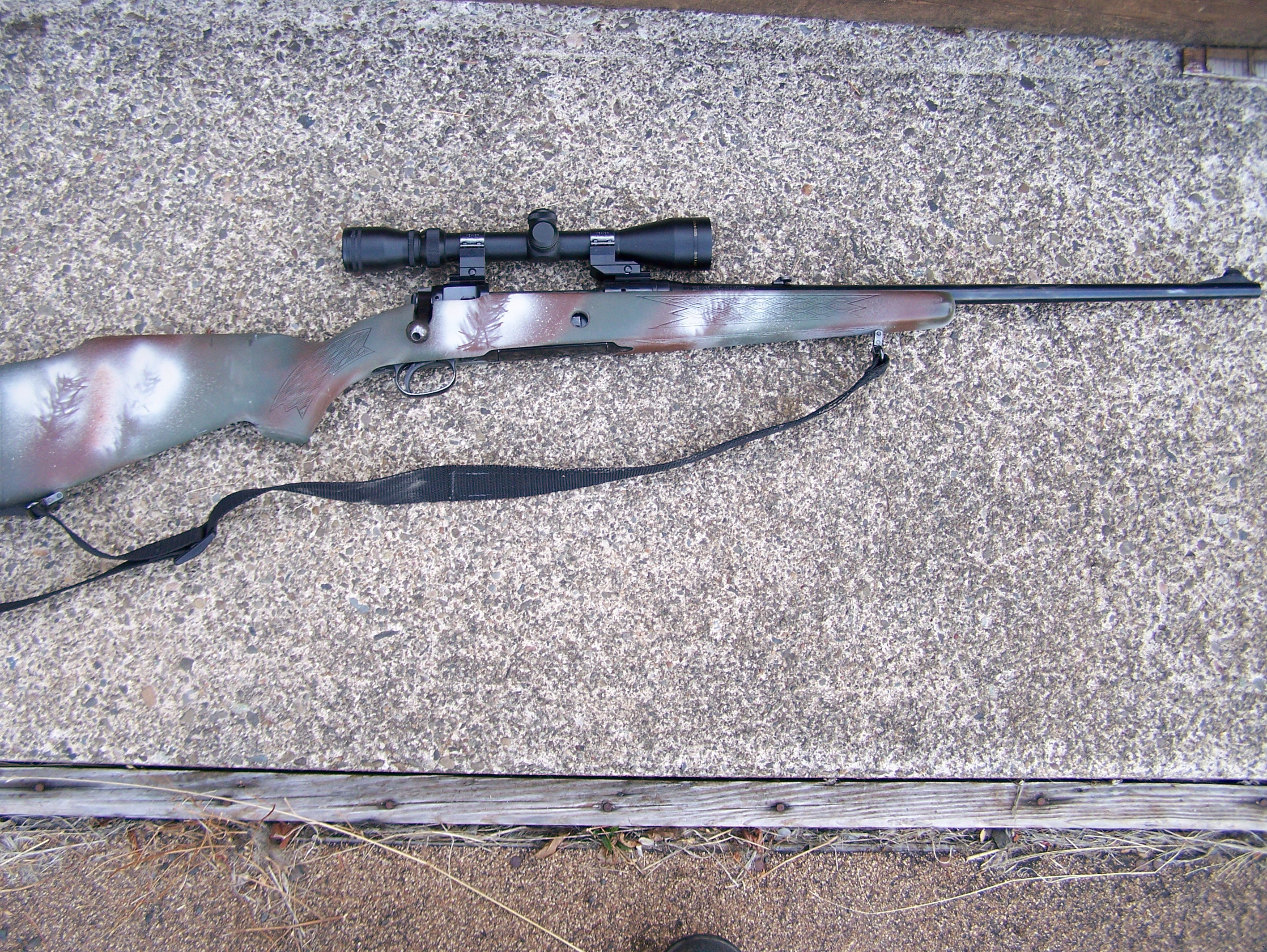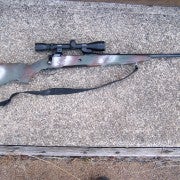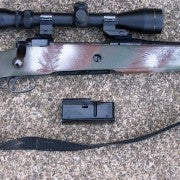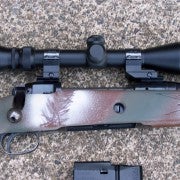My Savage 110C Bargain-Basement Truck Gun
Pat Cascio 08.08.16

Like many folks, I really enjoy getting my hands on a new rifle or handgun. It just warms my heart somehow. But due to, er, budgetary constraints, I also look for “beaters” or “truck guns.” This means a gun that has been well used and possibly abused, the finish is worn, and the stock is beat up. To me, that means the previous owner put a lot of miles on that gun for a reason: it was accurate and it got the job done.
My local gun shop had a homely-looking Savage Model 110C (discontinued model) sitting in the rifle rack, and I took a look at it. The wood stock had lots of dings and scratches. The bluing was worn in many spots along the barrel and it even had some surface rust. The action worked smoothly and it was in one of my favorite calibers for big game hunting: 30-06. It even had iron sights on the barrel, which is uncommon on bolt-action centerfire rifles these days.
Savage Arms is known for making accurate rifles. While not the prettiest rifles on the market, they can usually really shoot.
The asking price on the beater was $229.00 without a scope, though it had rings on it. After some negotiations, the dealer put on a no-name 3x-9x 40mm scope on it, and I took it home for $200.00.
Accuracy
After boresighting the scope, I headed out to shoot my new prize. I had two mixed boxes of ammo and some Black Hills Gold 168-grain Hornady A-Max ammo. With the mixed boxes of ammo (and they were truly mixed; different brands with various bullet weights) I was getting two-inch groups. That’s not bad, considering.
When I stoked the old Savage with the Black Hills ammo, I consistently got one-inch groups resting the rifle over the hood of my SUV on top of a rolled-up sleeping bag. Wow! I was impressed.
I took the gun home, where it sat on my work bench for a couple weeks until I just couldn’t stand looking at that beat-up stock anymore. I took the gun apart, cleaned the wood stock, took out my spray paint, and went to work. I used various camo colors and pine branches to create a woodsy camouflage effect. In the end, I had a poor man’s “sniper” rifle of sorts.
The Savage’s action was given a good cleaning. The barrel was filthy and took a lot of scrubbing to get it nice and shiny. I used steel wool and oil to clean off rust spots and touched up the bare spots on the barrel using some cold bluing.
Features and Function
The action itself was nice and smooth. Using “tactical oil” from Italian Gun Grease on the bolt’s locking lugs and rails, the gun was really slick. I cleaned and lubed the detachable magazine. The trigger pull was right at 4 pounds and very crisp.
The old Savage was taken out for another test drive and to give the no-name scope a final zero with the Black Hills 168-grain Hornady A-Max ammo. At 100 yards, when I did my part, I was getting groups ever so slightly under that one inch mark. I had a really straight shooter on my hands. I was ready for hunting season–or so I thought.
Final Thoughts
In all, I probably have 3 hours invested in cleaning and painting this rifle, and a total investment of $200.00 if you don’t count the cost of the spray paint. That’s one heck of a deal for a big game rifle that will shoot inside of an inch at a hundred yards.
So, next time you’re in your favorite gun shop, don’t be afraid to take a closer look at those beat-up old rifles that are priced “oh-so-right” for your budget. I’m betting you’ll find a real gem at a bargain price.



